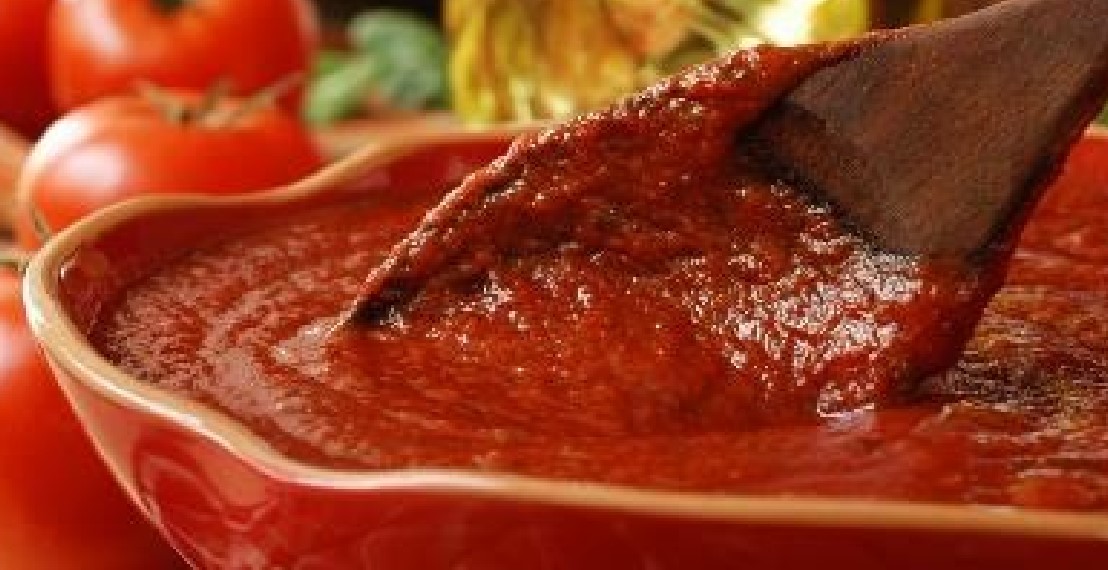Homemade tomato paste adds rich flavor and concentrated tomato goodness to recipes, such as chili. By making a large batch and freezing it, you can enjoy the taste of fresh tomatoes throughout the year.
ALLERGIES:
- SF (Shellfish)
- GF (Gluten)
- DF (Dairy)
- EF (Egg)
- NF (Nuts)
INGREDIENTS:
- 5 lbs. chopped plum tomatoes
- 1/4 cup extra-virgin olive oil, plus 2 tbsp.
- Salt, to taste
INSTRUCTIONS:
- Heat 1/4 cup of olive oil in a skillet over medium heat.
- Add the chopped tomatoes to the skillet.
- Season the tomatoes with salt.
- Bring the mixture to a boil.
- Cook, stirring occasionally, until the tomatoes are very soft, about 8 minutes.
- Pass the cooked tomatoes through the finest plate of a food mill to remove any skins or seeds.
- Push as much of the tomato pulp through the sieve as possible, leaving the seeds behind.
- Transfer the tomato paste to a slow cooker.
- Cook the tomato paste in the slow cooker for 4 hours on low heat.
- Allow the tomato paste to cool.
USES OF HOMEMADE TPOMATO PASTE:
- Cooking Base: Tomato paste serves as a flavorful base for various dishes such as soups, stews, sauces, and chili. It adds depth, richness, and a concentrated tomato flavor to recipes.
- Pizza and Pasta Sauce: Tomato paste is commonly used in making pizza and pasta sauces. It adds a concentrated tomato taste and helps thicken the sauce.
- Marinades and Glazes: Tomato paste can be used in marinades and glazes for meats, providing a tangy and savory flavor.
- Flavor Enhancer: Tomato paste can be added to dishes to enhance the overall flavor. It adds a natural umami taste, which enhances the savory notes in the food.
STORAGE:
- Refrigeration: Homemade tomato paste can be stored in an airtight container in the refrigerator for up to one month. Make sure to use a clean spoon each time you scoop out the desired amount to prevent contamination.
- Freezing: Tomato paste can be frozen for longer-term storage. Here’s how to freeze it properly:
- Portion the tomato paste into ice cube trays or small airtight containers.
- Place the trays or containers in the freezer until the tomato paste is frozen solid.
- Once frozen, transfer the tomato paste cubes or containers to a freezer bag or airtight container.
- Label the container with the date and use within 6 months for the best quality.
- Thawing: To use frozen tomato paste, simply remove the desired amount from the freezer and thaw it in the refrigerator overnight or defrost it in the microwave using low power. Avoid refreezing thawed tomato paste.
NOTE:
- When using stored tomato paste, remember to adjust the amount according to your recipe’s requirements. As tomato paste is concentrated, a little goes a long way in terms of flavor. Enjoy the convenience and flavor of homemade tomato paste in your favorite recipes throughout the year.


